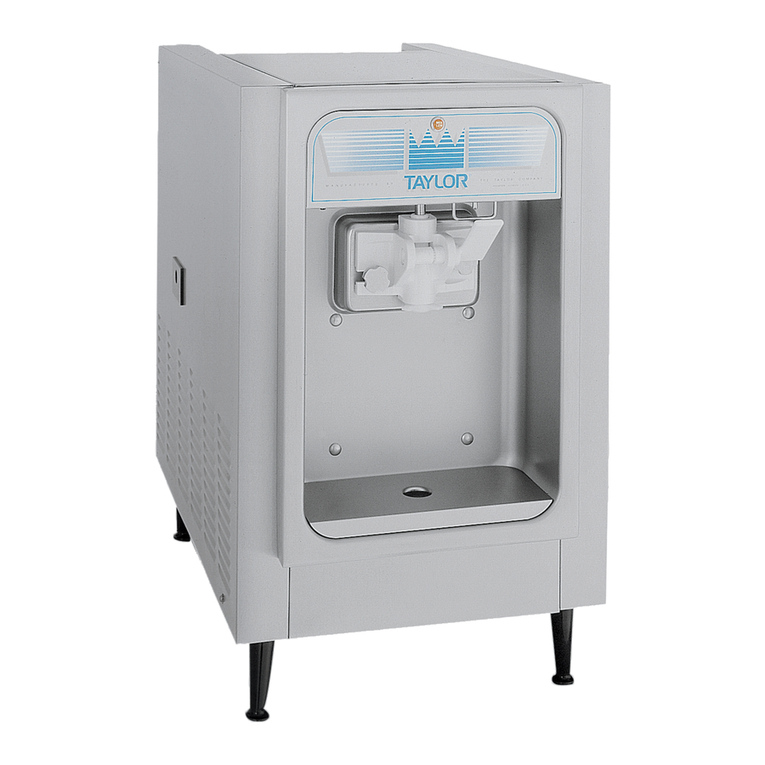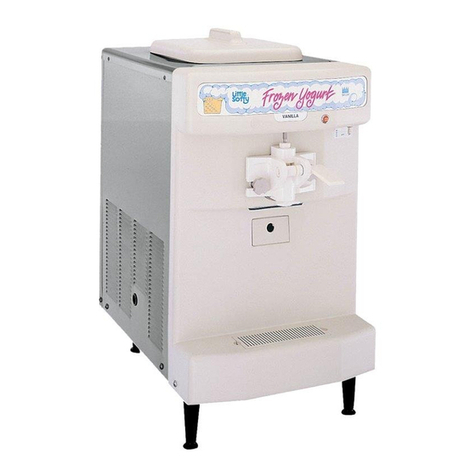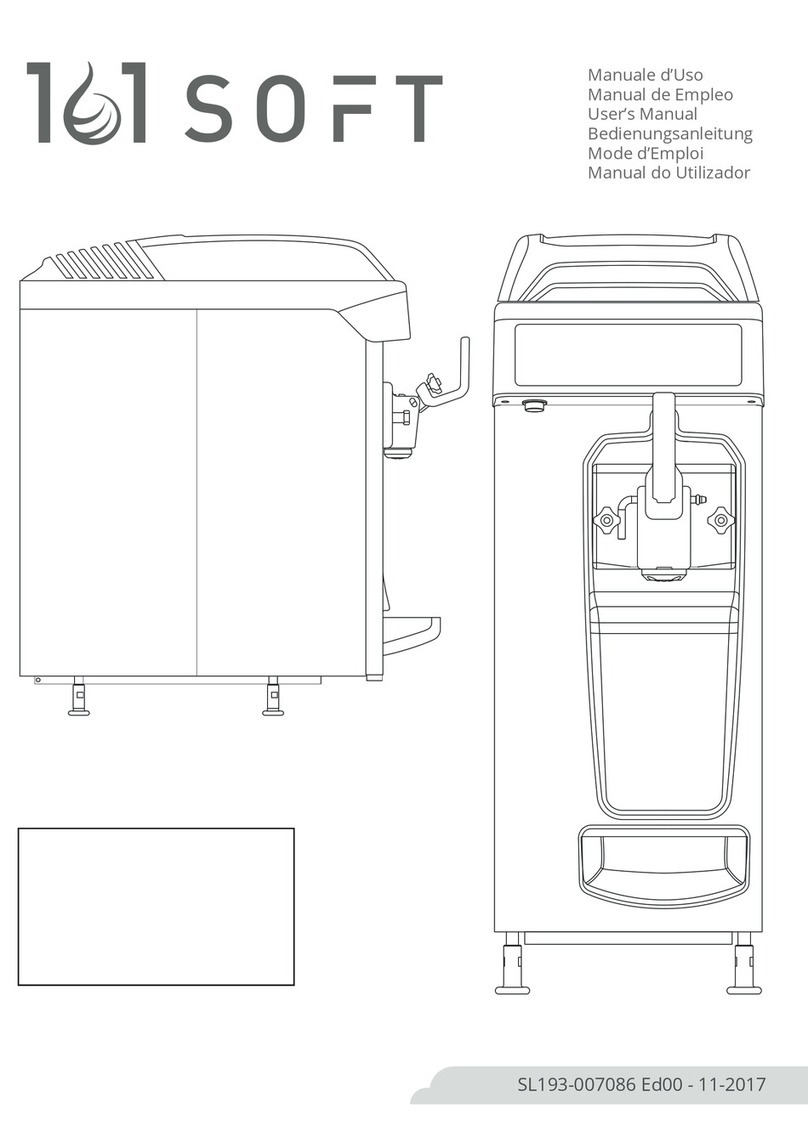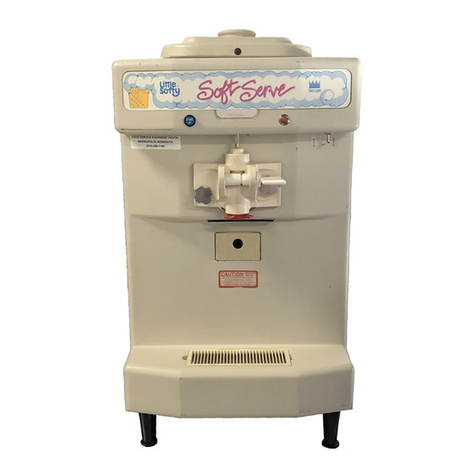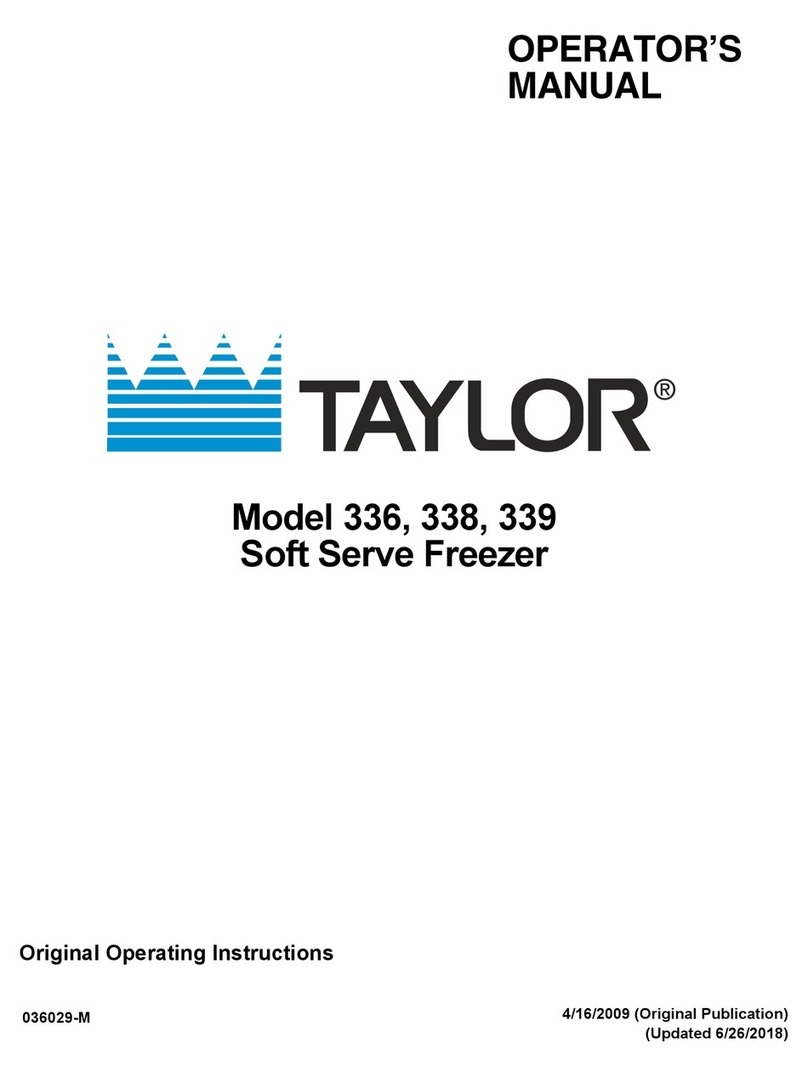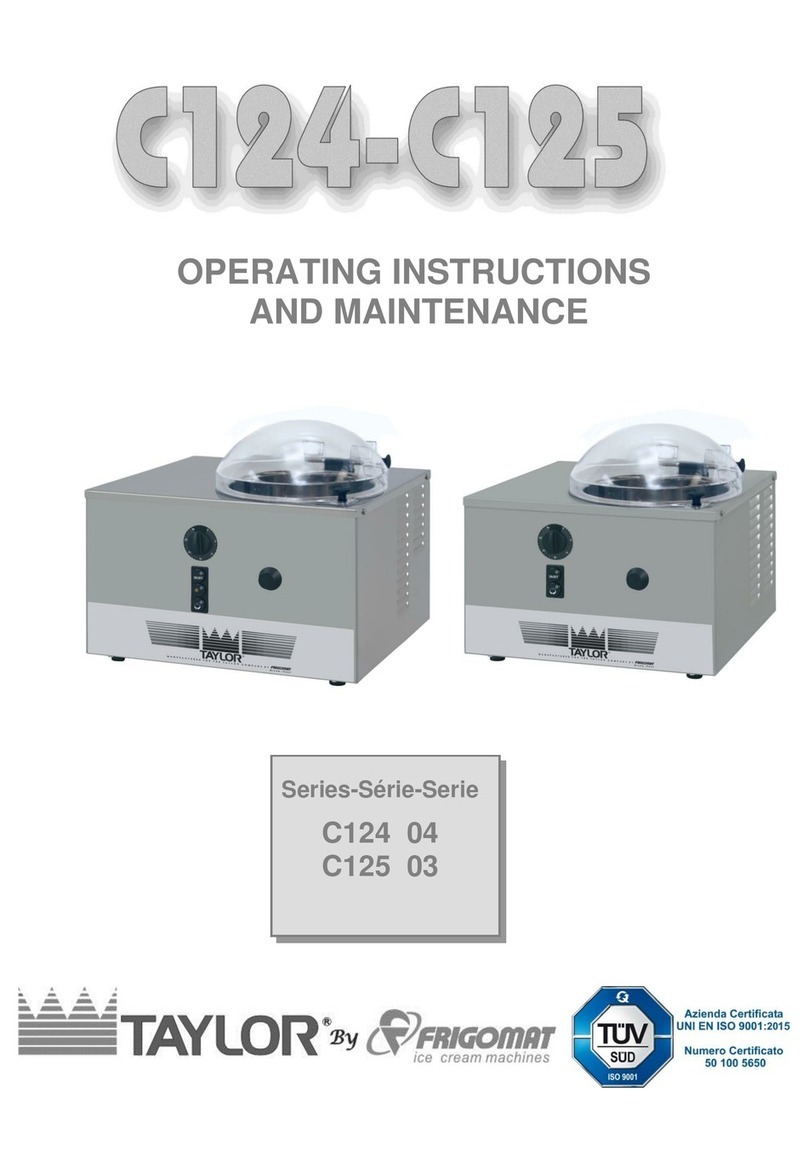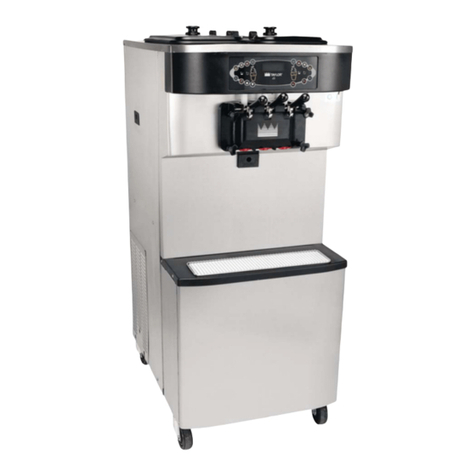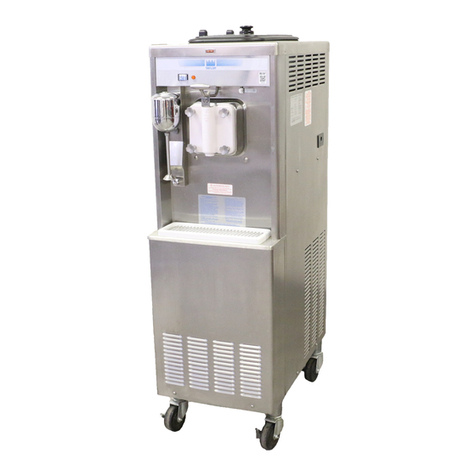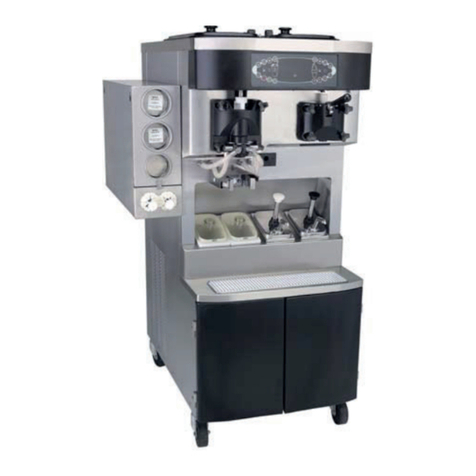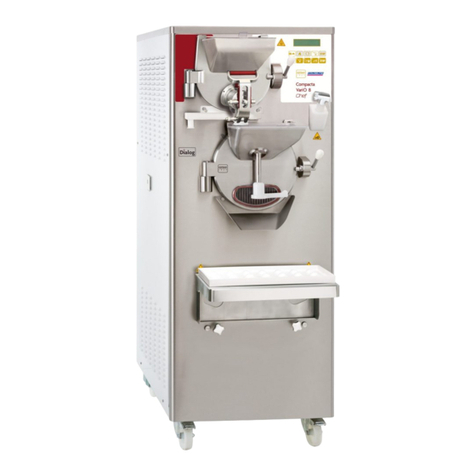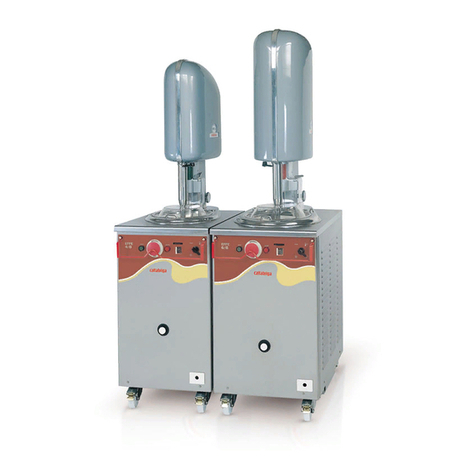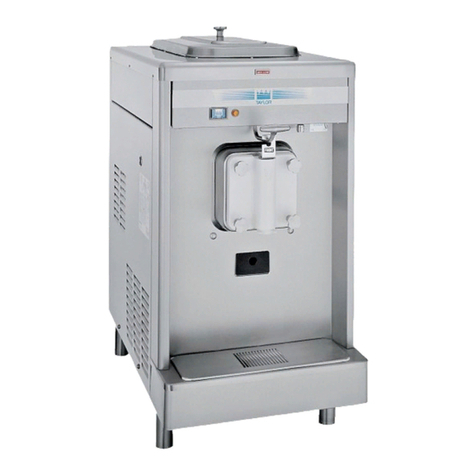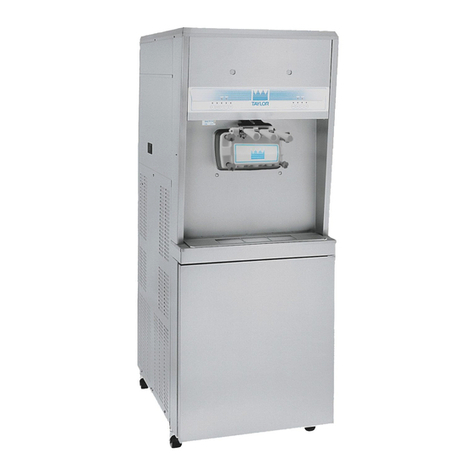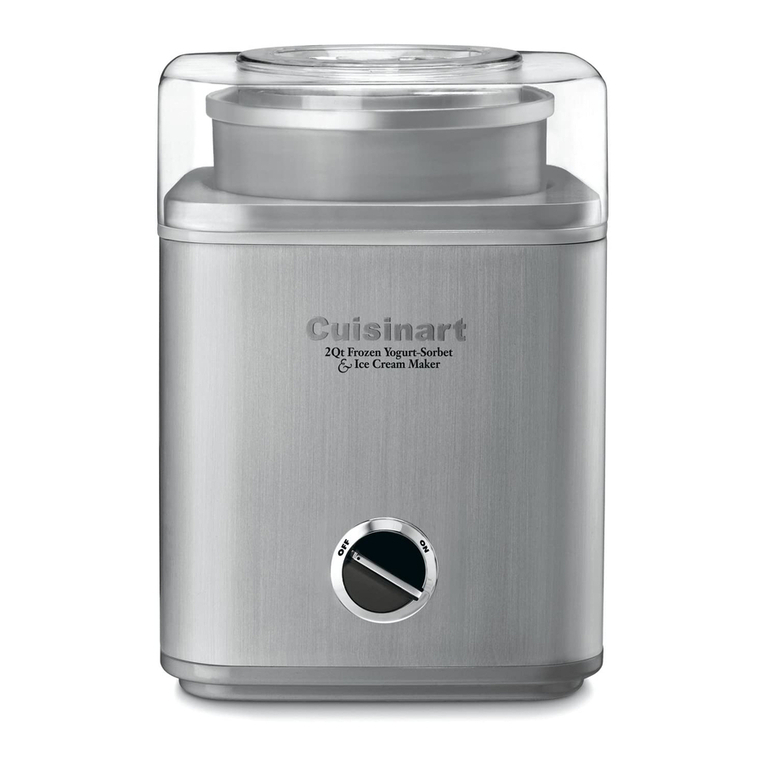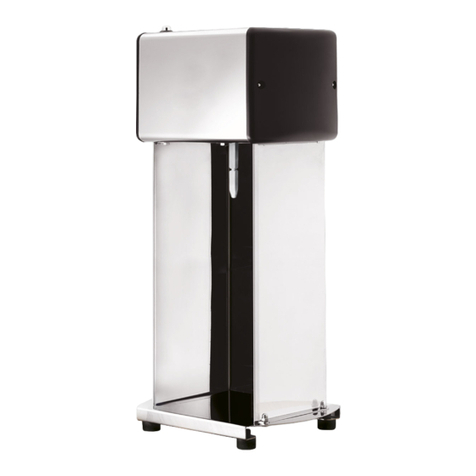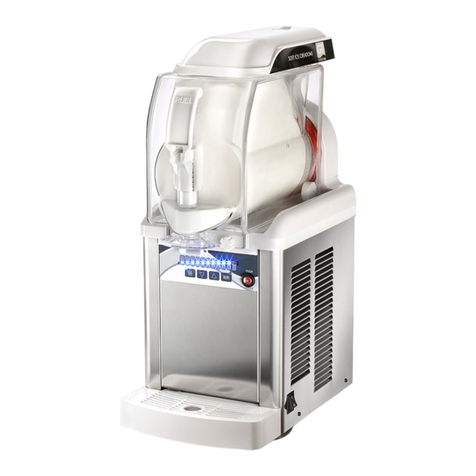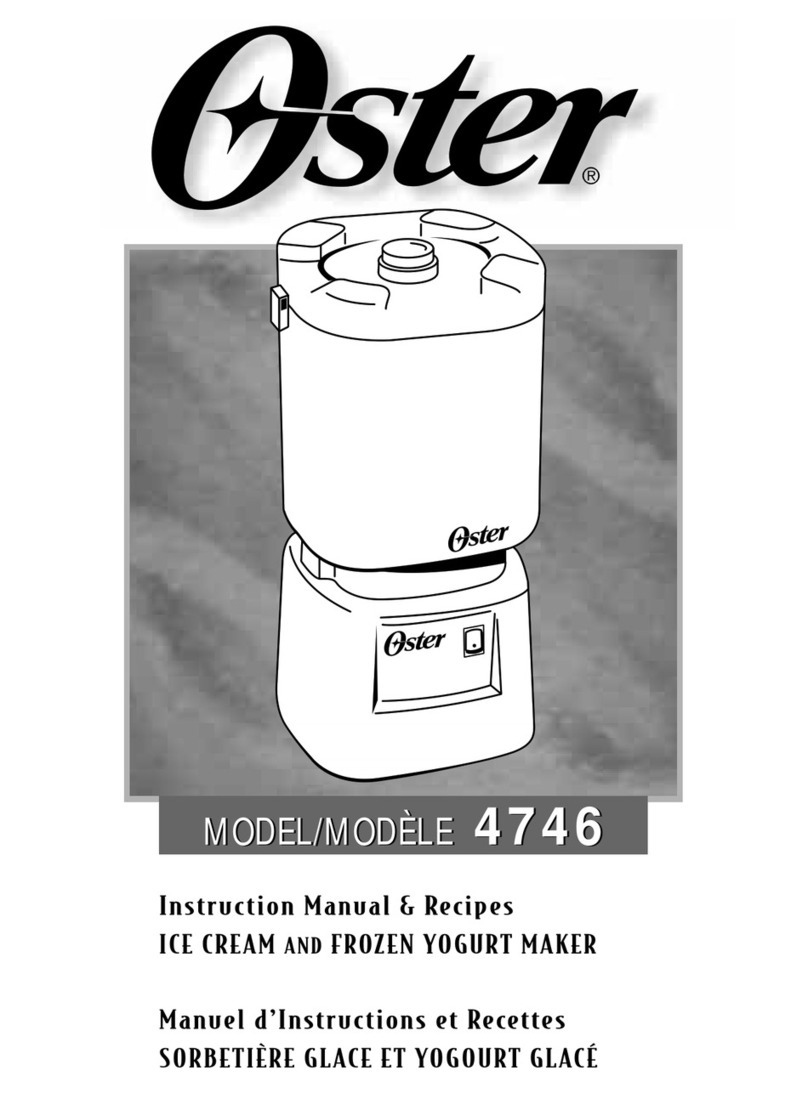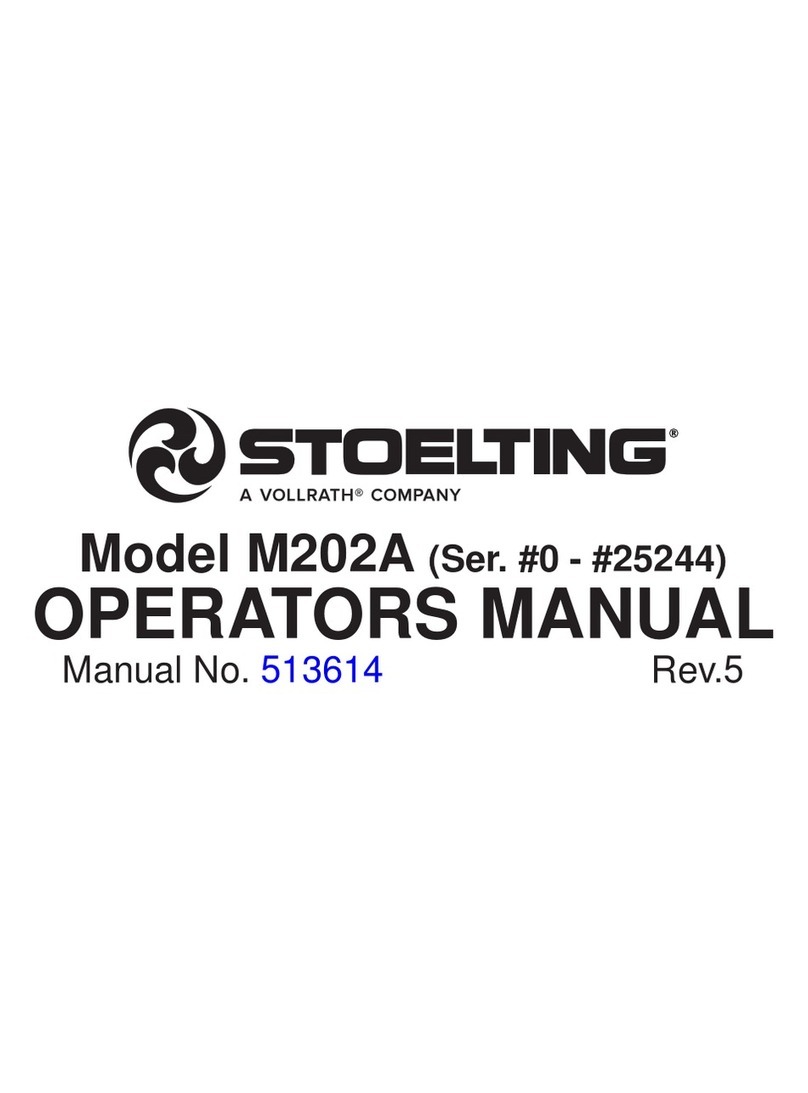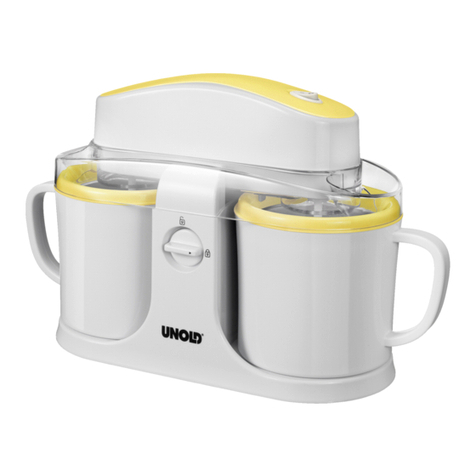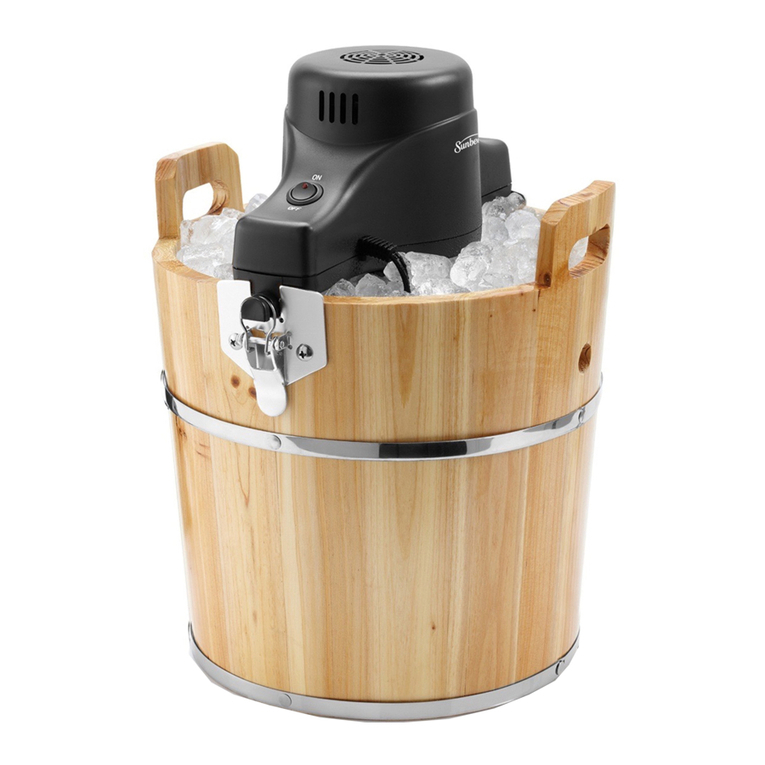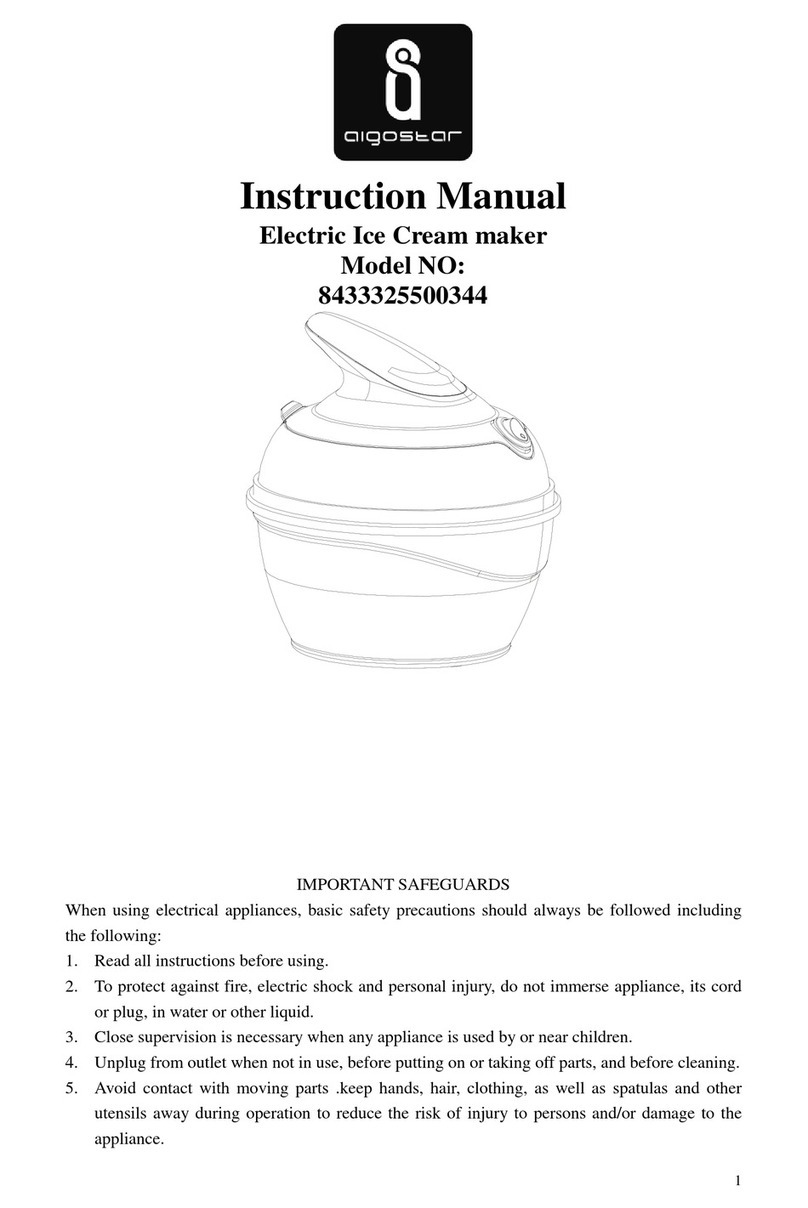
Safety
We at Taylor Company, are committed to manufacturing safe
operating and serviceable equipment. The many built-in
safety features that are part of all Taylor equipment are
aimed at protecting operators and trained service technicians
alike.
NOISE LEVEL: Airborne noise emission does not exceed 78
dB(A) when measured at a distance of 1.0 meter from the
surface of the machine and at a height of 1.6 meters from the
floor.
This manual is intended exclusively for Taylor Company
authorized service personnel.
Refrigerant
Taylor Company uses R404A refrigerant in the standard
softserve freezers. This refrigerant is generally considered
non-toxic and non-flammable;
however, any gas under pressure is potentially hazardous.
NEVER fill any refrigerant cylinder completely with
liquid. Filling the cylinder to approximately 80% will allow for
normal expansion.
Refrigerant liquid sprayed onto the skin may cause
serious damage to tissue. Keep eyes and skin protected. If
refrigerant burns should occur, flush immediately with cold
water. If burns are severe, apply ice packs and contact a
physician immediately.
The Taylor Company reminds technicians to be
cautious of government laws regarding refrigerant
recovery, recycling, and reclaiming systems. If you have
any questions regarding these laws, please contact the
factory Service Department.
Compressor Warranty Disclaimer
The refrigeration compressor(s) on this machine are
warranted for the term indicated on the warranty card
accompanying this machine. However, due to the Montreal
Protocol and the U.S. Clean Air Act Amendments of 1990,
many new refrigerants are being tested and developed; thus
seeking their way into the service industry. Some of these
new refrigerants are being advertised as drop-in
replacements for numerous applications. It should be noted
that, in the event of ordinary service to this machine's
refrigeration system, only the refrigerant specified on the
affixed data label should be used. The unauthorized use of
alternate refrigerants will void your compressor warranty. It
will be the owners' responsibility to make this fact known to
any technicians they employ.
It should be noted, that Taylor does not warrant the
refrigerant used in its equipment. For example, if the
refrigerant is lost during the course of ordinary service to this
machine, Taylor has no obligation to either supply or provide
its replacement either at billable or unbillable terms.
The Taylor Company will continue to monitor the industry and
test new alternates as they are being developed. Should a
new alternate prove, through our testing, that it would be
accepted as a drop-in replacement, then the above disclaimer
would become null and void. To find out the current status of
an alternate refrigerant as it relates to your compressor, call
the local Taylor Distributor or the Taylor Factory. Be prepared
to provide the model/serial number of the unit in question.
